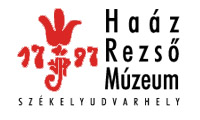Kovács Petronella (szerk.): Isis - Erdélyi magyar restaurátor füzetek 13. (Székelyudvarhely, 2013)
Puskás Katalin: Kísérlet a vörösbomlásos bőr kezelésére, avagy epizód egy 19. századi fotótartó mappa restaurálásából
rately, for the sake of easier viewing. The first surveys the structure and chemical make-up of stripped animal skin, the raw material for parchment and untanned hide, and also the physical and chemical changes that occur in it during its processing. In addition, it presents the main types of artefacts made from these two materials, their reactions to different impacts from the environment, and the types of impairment characteristic of them. The second study surveys the possibilities for the restoration of the above materials. Today, by the term parchment we understand any limed, fleshed, unhaired, untanned, raw skin which has been dried stretched out and whose surface has been made even and smooth by rubbing and scraping. Skin prepared in this way is opaque, soft, thin, velvety to the touch, and easily pliable. Many written documents from the Middle Ages onwards tell of its mode of preparation: according to these, there were only a few differences in the materials used and in the steps to be followed. Untanned hide is fleshed and in most cases unhaired raw skin. The technology for its production can be very different from district to district and from culture to culture, and the precise steps have not been sufficiently documented, unlike those for parchment. The simplest production method is to scrape off the flesh layer from a freshly removed animal skin while that skin is still moist, but this is often preceded by washing and soaking even. Moderate preparation of the surface (smearing with plant-derived liquids, shaping above a fire, etc.) also takes place occasionally, which may have the effect of partially tanning the skin. Artefacts made from parchment and untanned hide can be grouped according to a number of criteria. Examples are the artefact’s function, its materials, its spatial form (two-dimensional or three-dimensional), and the type of custody/col lection in which it is found. Parchment and untanned hide artefacts include authenticated documents (charters, treaties), works of fine art (miniatures, pastel pictures), movable artefacts (books, shadow puppets, fans), resonating membranes stretched on structures (drums, stringed instruments), and artefacts with hard surfaces beneath (boxes, cases, rocking horses), as well as clothing and materials for clothing (Inuit underclothes, special metal threads, sequins). Using untanned hide and parchment is in many cases more advantageous than using tanned leather. Processing them requires a good deal less time and expense, and when they are moist, they can be shaped very well; stretched on a mould, they assume their required shape after drying. Their material has a closed structure and resonates well, meaning that they are suitable for the making of musical instruments. Also, thanks to their dense structure, their resistance to wear and tear is considerable. Parchments are thin, pliable, but strong also; because of this, they are good as bearers of writing. Besides their numerous attractive properties, however, they are from many points of view more vulnerable than their tanned cousins. Since they do not contain tanning agents, they are capable of absorbing water more quickly and in greater quantity. Through changes in relative humidity, the secondary bonds stabilising their strung fibre structure may rupture, causing deformation, at higher temperatures shrinkage that is irreversible, and the production of gelatine. In the presence of water, hydrolysis, too, can take place, during which primary (covalent) bonds break down, reducing the strength of the material. Through the impact of the inks and pigments on them, parchment manuscripts have a heightened sensitivity to different types of electromagnetic radiation. By means of photo-oxidation, these break down the covalent bonds. The structure of their basic material, the physical and chemical structure that develops during processing, influences their behaviour fundamentally, not just on the shelves of collections or in glass cabinets in exhibitions, but during restoration also. Translated by Chris Sullivan Ildikó Beöthyné Kozocsa - Katalin Orosz - Márta Kissné Bendefy - Marianne Érdi Conservation Possibilities for Artefacts Made from Parchment and Untanned Hide, and the Impact of Treatment on Works of Art In Hungary, the beginnings of a scientific approach to parchment restoration may be linked to the ‘Corvina programme’ launched in 1983. In the course of this, conservators at the Conservation Laboratory at the National Széchényi Library (OSZK) endeavoured, in co-operation with a number of different institutions, to rescue parchment codices at the University Library in Budapest and at the National Széchényi Library that were in very poor condition. The programme aimed to chart the programme’s investigative possibilities for parchment and to develop the most appropriate conservation methods for the volumes. The investigations and experiments were directed at disinfection, the securing of coloured materials and metal foils, and the strengthening and repair of the parchment. It was at this time that Hungarian conservators developed a technology of parchment moulding and worked out a ‘recipe’ for a parchment pulp experimentally; these are now known across Europe as a Hungarian method. As a result of the programme, the conservation of 31 parchment codices was performed by conservators at the National Széchényi Library and the University Library. As well as these written documents, in the 1970s and 1980s there were also a number of theoretical and practical findings and results in the field of the conservation of museum artefacts made from hide. The three decades that have elapsed since then have brought many new ideas and observations. Accordingly, this study takes into account the current situation of parchment and untanned hide conservation, and also the methods it employs. Additionally, the study summarises the state of knowledge today and the research findings of the last years. The authors endeavour to give a picture 221
